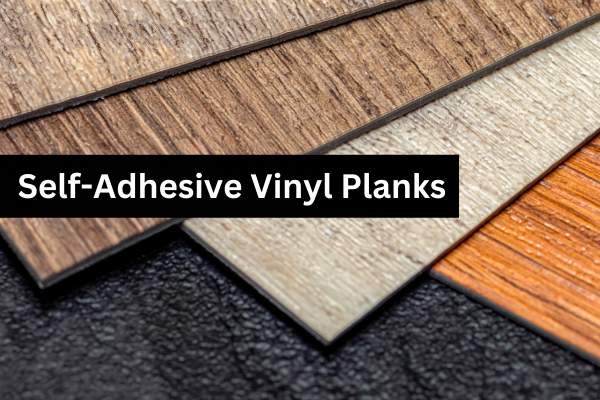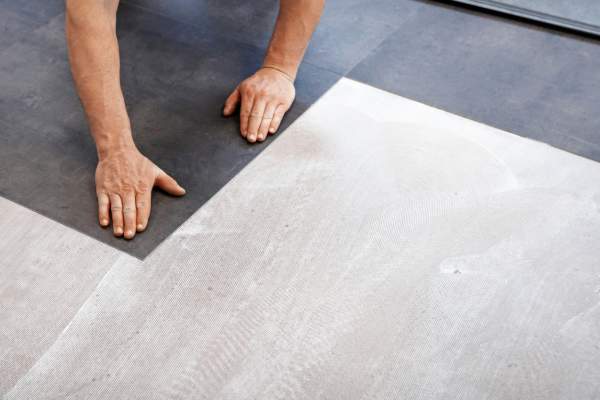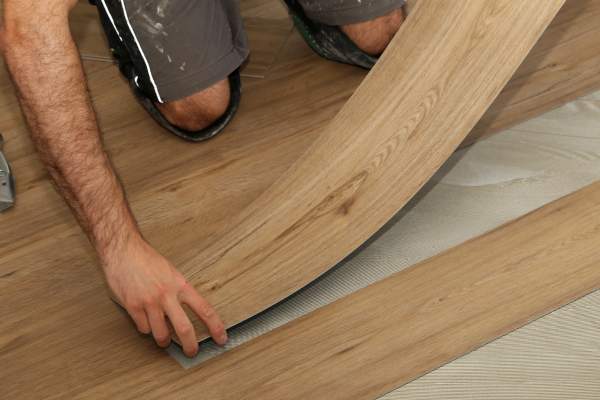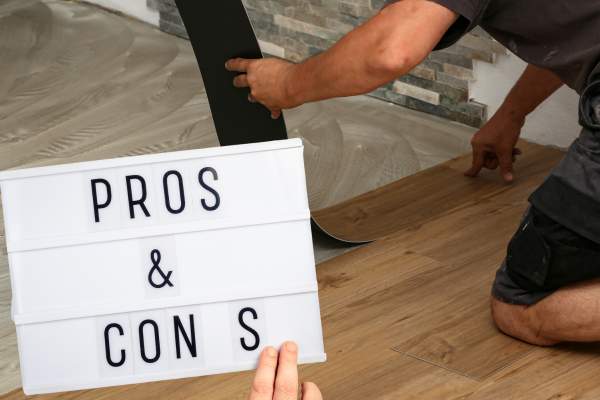The hassle of removing existing tiles often makes the tiling project time-consuming. It is true that removing the existing tiles and leveling the subfloor will help produce a premium finish.
On the other hand, it also requires a lot of effort and increases the cost. Thanks to developments in the flooring industry, various types of tiles simplify the installation process.
One such option is the self-adhesive tiles you can lay over the existing flooring. Hence, you don’t have to worry about removing the tiles.
Suppose you prefer to upgrade the old tiles by installing self-adhesive vinyl planks. Knowing whether you can lay these stick-on planks over the existing tiles is crucial.
This blog has provided information about laying self-adhesive vinyl planks over tiles.
Yes, you can lay self-adhesive vinyl planks over the tiles. When installing on top of the existing flooring, it is essential to ensure that stick-on vinyl planks will adhere to the type of tile. You must clean and level the existing flooring before installing self-adhesive vinyl planks.
If the existing tiles are loosening and dummy, it is better to remove them.
Self-Adhesive Vinyl Planks

Self-adhesive vinyl planks are a cost-effective way of upgrading the house. These planks have an adhesive backing, so you don’t have to apply tile adhesive. When installing self-adhesive vinyl plank, peel the backing and directly stick it to the prepared subfloor or the existing flooring.
These stick-on planks adhere to most of the flooring. Following are a few advantages and disadvantages of using self-adhesive vinyl planks:
| Advantages | Disadvantages |
| 100% water-resistant | Applying additional glue to stick self-adhesive vinyl planks may form strong adhesion. Hence, it will be difficult to remove. |
| It can be laid over ceramic, granite, tiles, laminate, and other subfloors. | |
| Suitable for both residential and commercial flooring purposes. | Strong objects can damage these stick-on planks. |
| Range of decor options like stone, wood, cement, etc. | Not biodegradable. |
| Easy to clean and require low maintenance. | Exposure to direct sunlight or excessive UV rays may result in discoloration. |
| Affordable |
Can You Install Self-Adhesive Vinyl Planks Over Existing Tiles

Many people need clarification on whether you can lay self-adhesive planks over tiles.
Yes, you can lay these peel-and-stick tiles over existing tiles, but you must consider certain things before the installation. Although self-adhesive vinyl planks adhere to several types of flooring, there are some exceptions, like rubber and carpet.
You are good to go if you plan to install these planks over tiles. However, for long-lasting adhesion, you must check on the following factors.
- Check whether the tiles are in good condition. You might have to remove the tiles because you cannot lay self-adhesive vinyl planks over them if the tiles are drummy. You can request a free inspection from a friendly consultant.
- Ensure the existing flooring is level to prevent imperfections after installing the self-adhesive vinyl planks.
- Ensure that the type of floor tile will form a strong bond with the peel-and-stick vinyl planks.
How to Install Self-Adhesive Vinyl Planks Over Tiles

After confirming that the existing tiles are in good condition, you can plan on installing self-adhesive vinyl planks over them. Since these planks come with an adhesive backing, the installation is simple.
If this is your first time working with stick-on vinyl planks, follow the instructions below.
Prepare the Subfloor
Dust and dirt can weaken the vinyl planks and the subfloor’s adhesion. Therefore, you sweep the floor and vacuum it to remove any dirt.
It is recommended to wash the floor using a deep-cleaning detergent. Scrub the tiles to remove any stubborn dirt. If the floor is not leveled evenly, apply the leveling compound with a trowel to obtain a smooth surface.
Installing Self-Adhesive Vinyl Planks Over Tiles
Measure the walls and mark the center points. It would be best to lay the self-adhesive vinyl planks at an angle to the chalk marks. The first stick-on plank is applied where the two chalk marks meet ( the center of the floor). A rolling pin rolled on top of the planks removes air bubbles and sticks the plank firmly to the floor.
Repeat the same process for the rest of the self-adhesive vinyl planks. When working on edge tile, draw a line through which you need to cut the plank (use a straight edge when drawing a line).
Then cut the planks into shape using a heavy-duty shear or tile cutter.
Note: If you are ordering the self-adhesive vinyl plank from another region, leaving the planks for a few days before installing is better. This is because exposure to the new environment may cause the planks to shrink.
Pros and Cons of Installing Self-Adhesive Vinyl Planks Over Tiles

Compared to traditional vinyl tiles, peel-and-stick vinyl flooring works well when tiling over an existing floor. Following are some pros and cons of laying self-adhesive vinyl planks over tiles.
Pros
- The stain and water-resistant, self-adhesive vinyl planks are easy to maintain.
- Reduce the workload as you don’t have to remove the existing tiles. By preparing the tiles, you can lay the self-adhesive vinyl plans over those existing tiles.
- Reduces the cost of the overall tiling project since the planks are laid over existing tiles, and the installation process is DIY.
- Firmly adheres to the tiles; hence, it is long-lasting.
Cons
- Poor-quality self-adhesive vinyl planks may not firmly adhere to the existing floor.
- Slight imperfections in the subfloor will impact the result.
- Installing self-adhesive vinyl planks may reduce the resale value of your house.
- The self-adhesive vinyl planks’ thickness may increase the floor height when you install them over the tiles. As a result, you might have to cut the door shorter.
Final Thoughts
Self-adhesive vinyl planks are easy to install and will stick to the existing flooring. A self-adhesive vinyl plank is an excellent option for establishing new flooring over tiles.
Well-prepared and leveled tiles will firmly adhere to these stick-on planks. If the tiles are too old and not in good condition, don’t risk installing these planks on top of them because they won’t be durable.
In such cases, removing the old tiles and tile adhesive and then leveling the subfloor before installing self-adhesive vinyl planks is better. Since these planks are easy to install, you can DIY the task.
FAQs
Can I Lay Self-Adhesive Vinyl Palnks Over Ceramic Tiles?
The stick-on vinyl planks will adhere well to ceramic flooring; therefore, you can lay them over ceramic tiles.
Should I Remove the Old Tile When Installing Self-Adhesive Vinyl Planks?
If the old tiles are in good condition, you can prepare the surface and lay self-adhesive vinyl planks over them.
In contrast, if the tiles are too old and loose, then it is better to remove them.
Is Laying Self-Adhesive Vinyl Planks Over Tiles Cost-Effective?
Yes, since self-adhesive vinyl plank is inexpensive and easy to install, this saves a lot of money.
